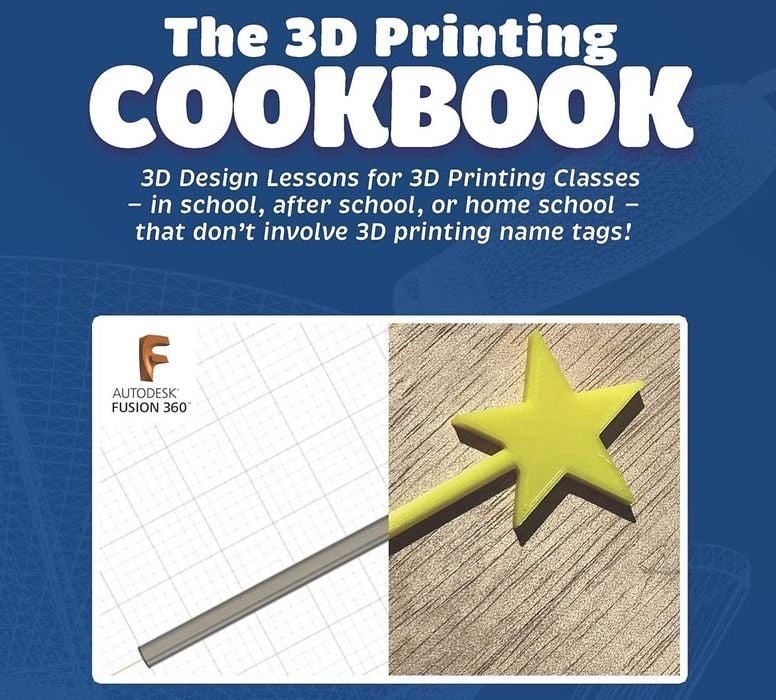
This week’s selection is “The 3D Printing Cookbook: Fusion 360 Edition” by David YM Seto and Michael J Welch.
Another book introducing 3D printing? There are many on the market today, and new ones appear each day. That’s a good thing because the technology changes very often and introductory texts need to keep up with the latest developments.
This book is somewhat different than most introductory books on 3D printing for one reason: it focuses on the use of Autodesk Fusion 360.
“Fusion” is an increasingly popular tool for developing 3D models. While it is entirely suitable for complex engineering projects with its many capabilities, it is also quite accessible for those entering the 3D CAD world. Autodesk provides many resources for assisting those using the tool.
Why is Fusion 360 becoming more popular? I think it’s because of the extreme cost of alternative CAD software tools. They not only have a larger price tag for the tool, but often involve linked tools that also add to the total cost. Typically these are of most utility to larger organizations that are dispersed into different departments and geographies.
For individual 3D modelers, however, Fusion 360 is a good place to start because it leads into more powerful capabilities later as the user’s experience grows. Other introductory 3D modeling tools often have limited capabilities. These are good for a start, but often people get stalled when they realize the tool doesn’t do more advanced operations.
For that reason I often suggest new 3D modelers give Fusion 360 a try, and this can sometimes be done for no cost. Autodesk does offer free licenses for Fusion 360 to qualified individuals, particularly those not working commercially, or those in startup companies. That’s one reason we increasingly see Fusion 360 used in individual projects.
Here we have a book that introduces 3D printing AND uses Fusion 360 at the same time. That’s a unique approach I haven’t seen previously in text form.
The book provides a number of 3D print examples — in Fusion 360, of course — and takes the reader through an increasingly complex set of activities. While it’s targeted at students and for teachers specifically, it’s certainly of great use to individuals as well.
If you’re interested in learning more about 3D printing with intent on doing advanced projects in the long term, this could be a very good place to start.
We’re an Amazon Associate and earn a small fee from qualifying purchases. Help support our 3D print news service by checking out this book!
Via Amazon
